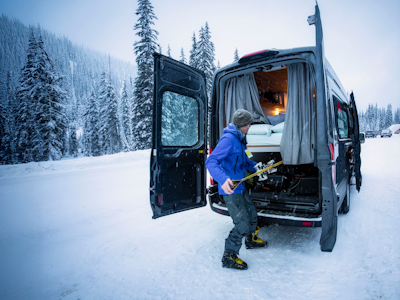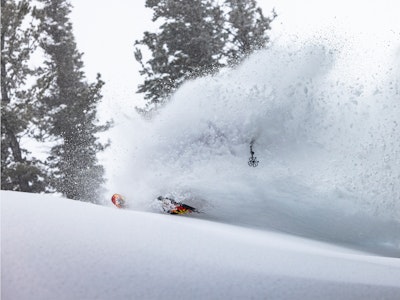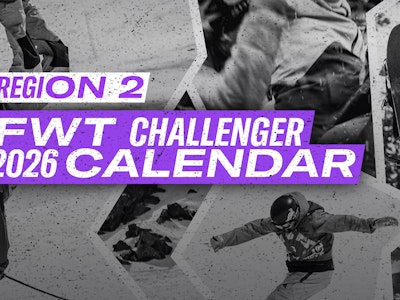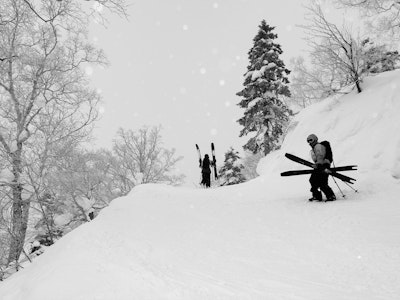This could cause me to lose my job.
Wait.. What job? I do photography for a living right now. Maybe it will cost some OTHER pros THEIR cushy desk jobs. Haha suckers.
I"™m going to drop it. Some off camera lighting info for all you kiddies shooting with the latest (or far from latest) digital slr or film camera. You see those immaculately lit night urban shots, the blower power in the pitch black in the under armor ads or Jon Olson framed against a sunset perfectly exposed. How the crap do they DO THAT?! Time to get your reverse engineering hat on.
Off camera lighting requires a camera with a "hotshoe" (essentially an SLR camera). A "hotshoe" is a small silver "dock" for a large flash that sits on top of your camera. Don"™t have one? Who cares keep reading this is all about flash photos.
My hope in sharing this info is that it will spark a small flash revolution in urban ski photography. Maybe a few more up and comers out there will get better this season and push the envelope. Give everyone else some competition, its the only way to "progress" (oh that term).
Off camera lighting?
Yeah OFF camera. That dinky little flash on TOP of your camera is kind cool when you"™re shooting snapshots but if you want to really make some photos POP give your self some DYNAMIC (read: ability to change, alter, adapt) lighting. Lights you can move, that have a little more power and make you look super duper professional. Digital bling is always baller (shout out to the DIGI Dave on this one. All your flash are belong to me.)
Why FLASH(strobes) instead of "natural light"?
Think of it like another sun you have at your disposal. Every day photographers are at the mercy of that ball of gas in the sky. We shoot early morning, late afternoon for that nice "magic hour" light but then the lights go out. Black. Flashes are the light in the darkness (punch me now). You can add a "fill" light into a daytime portrait to reduce nasty shadows, isolate an epic afternoon sunset tail grab against the mountains or just light up a spot that HAS no light. You are no longer totally at the mercy of gas. Haha.. ohh man..
Part 1 (Mindset):
Off camera lighting takes a ton of creativity, a little bit of understanding, more playing and (unfortunately) a moderate amount of dough. What is off camera photo lighting? Strobes or continous light sources (different). A "strobe" is just another fancy term for a flash but a more powerful one than that little guy on top of your canon point and shoot. A continuous light source is something you have right at home, your desktop lamp. Shoot with strobes. Small strobes. Why small strobes? Small strobes like the Nikon SB-24,25,28 offer a moderate amount of power, a ton of portability, they don"™t eat batteries, they can be triggered WITHOUT Pocketwizards (pocket WHAT?!), you don"™t have to worry about lugging all that weight around and they cost $80 used. Used flashes are a bit of a gamble but I"™ve had nothing but luck with all my purchases. Want to step up your game? Try the Nikon SB-600/800 (both circa 2007/8).. they run around $250 a piece at least though. Break it and you"™re out a pair of skis essentially. Ouch. BUT the newer flashes can be AUTO balanced (options changed REMOTELY) right from your camera. Cool. I"™m mentioning only Nikon Speedlight strobes because thats what I work with and they work flawlessly with pocketwizards. Canon speedlights require some finnessing and hacking to work with Pocketwizards, not cool. (Pocket WHAT!? Again?!). Pocketwizards; they"™re remote radio transceivers (send/receive) that allow you to fire flashes from up to 1600 yards away. Booyah. Downside, they cost $187.00 a piece AND you need one for: YOUR camera and EACH flash. Upside, they"™re reliable as hell, hard to break, amazingly light and totally indespensible. Don"™t buy Pocketwizards used, buy them new. Plus, you"™ll never find used ones. Once a photog grabs a set of these its a game of "hold"™em till they die". You"™ll sleep with them under your pillow. Seriously.. is that weird? Another note: don"™t buy those radio transmitters off eBay. They"™re SOOOOOO CHEAP THOUGH.. You get what you pay for in the end. Spring for PWs, you"™ll be happy you did.
Austin, how many flashes should I buy?
Thats up to you. At least 2 in my mind, I would prefer three and ideally five (backup). In a real world "urban" (I"™m using it again) ninja session you"™ll have time to set up maybe two flashes if the man is bearing down on you. At a more low key session you could set up three but then you have to keep track of all three. Plus its more crap to carry and more money to spend. I"™ve seen some BOMBER shots with only ONE flash on TOP of the camera (portraits of Seth Morrison and a crab run in Freeskier last season). The point here is getting your flash OFF the camera though.
Edit:
Also look into Vivtar 285 HVs. Last season I began working with these. They"™re the latest update of an OLDER flash that Vivitar made, the 283. The 285s are simple (no lcd menus), cheap $90 NEW and indestructible. I mean this, indesstructible. Downside is they require a propreitary cord to connect to your pocketwizards and they have NO auto features. For the price they are worth buy due to durability, portability and learning to expose without all that fancy junk. How often have you wiped your butt in the wilderness with leaves or jury rigged a spot on the floor to sleep? We"™re skiers, get with the cheapness. I rest my case.
Recap:
Small strobes (Nikon or Canon Speedlights, Nikon = better right now OR Vivtar 285 HVs)
Pocketwizards OR learn to use the OPTICAL trigger feature on your speedlights
Wait"¦ Optical trigger? Like I look at it and it goes off? You"™re nuts.
Nope I"™m not. Optical triggers are standard on most small strobes and studio setups these days. It allows you to pop one flash that pops all the other flashes. Some of these optical triggers can even tell each other how much power to use for proper exposure. The downside is when you"™re at an event or rail with anyone else using a flash you might get pre-triggers (ok now you"™re getting dirty). Pre-trigger occurs when your flash goes off before YOU set it off due to ANOTHER photographers flash. Optical triggers look for ANY flash that goes off in the line of sight, thus triggering THAT flash. Got another photog right next to you.. bad news. Hence the use of Pocketwizards that rely ONLY on a RADIO signal. You can both be on Pocketwizards on different channels. Its so nice to play together. BUT if you want cheap, WIRELESS, OFF CAMERA flash and you manage to ensure you"™re the only photog (bribes, "accidents" or pure sheistyness) then you"™re the man. You got a dope flash setup without paying $187.00 for EACH pocketwizard.
Oh god what else..
Off camera can also be achieved with whats called a "synch cord". This cord attaches to the "hotshoe" (that silver piece on top of your SLR) and to the flash. Synch cords allow the camera to "synch" with the flash and set it off when you pull the trigger. Synch cords are a cheaper alternative to pocketwizards. Downside.. you have to HOLD that flash thats attached to the synch cord somehow. They make brackets for this.. or you can use your hands you cheap punk. It is a little challenging to hold that flash in one hand and the cam in the other though.
Flash stands. Bogen makes awesome, cheap, hard to break flash stands. Jeff Winterton used to use ski boots, shoes and duct tape his flashes to ski poles stuck in the snow near a rail. I"™m not as cool as Winterton so I use stands. Stands are just more gear to lug around though so its up to you. I don"™t want to be in the car with your stinky shoes AND stinky flash though.
Gels. Gels are all the rage right now. You"™ll see them colorfully add to Michelfelder"™s, Erik Seo"™s and my own stuff (not that I"™m in the same league I just happen to be enough of a poser to copy the pros style). Don"™t pay for expensive gels offered with strobes you buy online or elsewhere. Buy colored folder tabs (slightly see through) in an assortment of colors from Staples on the cheap. Go to town. They work great and you can laugh at the rich fools who spend $30.00 for five pieces of colored plastic.
Stratgey..
Watch out for those pesky athletes. They"™ll knock your flashes over every chance they get. With that said get a friend to hold your stands or pile some snow on the base.
A classic strobe setup can be two strobes on either side of the front of a rail at 45 degrees. Kind of boring but in a pinch it works. Otherwise put your flashes everywhere and anywhere. Mind the weather and path of the crash-letes though.
Don"™t blind your skiers. They hate it and they will throw poles at you. Boo.
Keep a file of cool flash photos you see and try to figure out where the flashes were. Draw the setup on paper then reproduce it in practice. THEN improve on it, send it to me so I can use the same setup and get MY shot published"¦ …I"™m kidding. Get your own stuff published but SERIOUSLY keep a file. It will help you in the long run.
You don"™t need a lot of money to do cool things with OFF camera flashes (strobes). That"™s ONE of the point"™s I"™m trying to convey here. Flashes ARE realtively expensive its true BUT find cheap ways to make cool effects.
Awesome site: www.strobist.com
Awesome OFF camera non ski photogs: Tim Tadder, Joey L (canadian eh),
Build your flash setup slowly. Learn to use each piece AS you get it, one piece at a time. A bunch of gear you KIND of know how to use does you no good, slows you down and ultimately creates more drama then its worth.
I"™ve attached some photos ALREADY posted on the site here. I accomplished all these flash shots with $80 flashes, two (sometimes three) pocketwizards, a USED Nikon d70, gels from folder tabs I bought at Staples and some awesome collaboration with fellow skiers.
I"™m sure I left a ton of stuff out. This was another caffeine rant. Maybe in a little while I"™ll get into technique, setups, do a little diagram for portraits/rails/ledges/drops/jumps/pow shots. We"™ll see what kind of response this gets.
Save your pennies, buy some small flashes, go where studio flash setups can"™t, build/attach/modify the light from these flashes, create photos none of the rest of us could imagine and make your mark on ski photography. Flash photography isn"™t necessary, the end all be all or ultimate destination; its just a step in the journey.
Now I sound like a fortune cookie. Done.

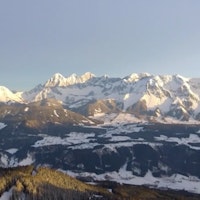
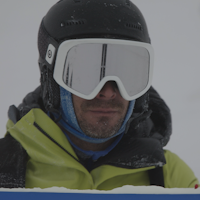

![[GIVEAWAY] Win a Legendary Ski Trip with Icelantic's Road to the Rocks](https://www.datocms-assets.com/163516/1765233064-r2r26_freeskier_leaderboard1.jpg?auto=format&w=400&h=300&fit=crop&crop=faces,entropy)

![[GIVEAWAY] Win a 4-Night Karma Campervan Rental and go Ski the Powder Highway](https://www.datocms-assets.com/163516/1767816935-copy-of-dji_0608-1.jpg?auto=format&w=400&h=300&fit=crop&crop=faces,entropy)

